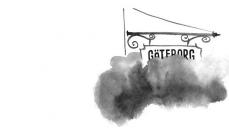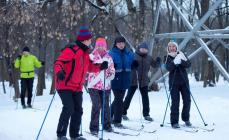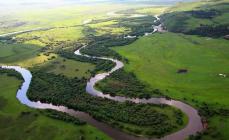Among the many tourist cities of the country there is a wonderful city called Dzhubga, which is ready to welcome tourists with open arms and surprise them not only with excellent services, but also surprise with its views. This is a relatively small village with a very interesting history.
The first settlements in the city were in 1864, which indicates that the city is relatively young. Initially, the city was founded as a military settlement in which the troops of the Shapsug battalion stopped. Initially, sixty-five families lived in the city. In total, the number of inhabitants did not exceed three hundred and sixty people. These people settled at the mouth of the river. Over time, residents began to ennoble their settlement, build new buildings, houses, and thus began to develop the city. When the battalion was liquidated, the inhabitants of the city had already settled normally, built their own housing and did not want to leave their homes.
Over time, this settlement was given the status of a parish. Residents were assigned to the Black Sea province, and the village continued to develop. For a long time this graying was not paid special attention, but the development of the parish and small settlements in the district led to the need to rename it. The Dzhugba volost became the center of the Dzhugba region. Already in 1925 the settlement became the administrative center. People were attracted by nature, and over time, more and more people came here who were ready to live there.
But already in 1935, a number of districts were carried out throughout the country, and the Tuapsky district, to which this settlement belonged, also got there. And the village was attributed to the Gelendzhik region. But this was not the last administrative change in this town.
Years passed and the settlement developed more and more. During the 1960 census, there were already three hundred and forty-six families living here. The city demanded further development and new schools appeared, libraries and all kinds of entertainment facilities were upset.
And already in 1966, this city was given the name of a resort village, which allowed it to develop in the tourist direction.
On this moment the city is home to more than five thousand indigenous people and many visiting tourists. This is one of the most the best resorts Black Sea coast that attracts every year everything more tourists. In addition, the entertainment industry is actively developing here. Dzhubga water park is one of the most beautiful on the coast. Also, the city has eight hundred meters of wonderful and simply incredible beautiful beach, which just asks to sunbathe on it. Almost all beaches are crystal clear and filled with white sand. small Mountain peaks open before you the beauty of the rocks polished by the sea wind and heavy winter rains. Along with sandy beaches, there are a number of beaches of mixed sand and pebbles.
This is a wonderful place to relax in the family circle, the village, like many years ago, has retained some calm and silence, this place is ideal for those who just want to calm down and be in silence, and quality service and friendly people will help you with this. Beautiful sandy beaches intertwined with large boulders that are located right on the seashore and all this is simply filled with wonderful plants of various colors.
Except beautiful sea you can also enjoy the wonderful Dzhugb waterfalls in this city. They are in the rocks, which gives this place a special beauty. The number of waterfalls is six and they occupy total area almost a kilometer. This is an indescribable beauty that definitely needs to be seen.
145. DARIFERSAGE- the commune of Darifersazh, according to the revision of January 26, 1923, was listed as part of the Lazarevskaya volost of the Tuapse district of the Kuban-Chernomorsk region.
146. TOP DEFANOVKA- farm Defanovka Verkhnyaya is located on the Defan River, 6 km northwest of the village of Defanovka, on the southern slope of the mountain White stone(out. 427 meters).
147. DEFANSKAYA- the village of Defanskaya was founded in 1864 as part of the Shapsug coastal battalion (regiment), had 48 families and 346 souls of both sexes.
The village of Defanskaya was registered in the lists of settlements by order of the Caucasian Army dated March 26, 1864. The first ataman of the village was Yesaul Gaponenko.
During the liquidation of the Shapsugsky battalion in 1870, the village of Defanovskaya was renamed the village of Defanovskoye. According to other sources, the village of Defanovskaya is the Velyaminovsky branch (department) of the Black Sea District.
According to the information early SKIN in 1905 in the village of Defanovskaya there were 122 households of Russian settlers, there was also the board of the Defanovskaya rural society.
147a. "9th kilometer"- The village of the 9th kilometer (Sochi highway) officially appears in the election documents of 1994 and 1996.
On the map of the Tuapse region in 1972, the village "9th kilometer" is listed, but in the statistics as of 01/01/1999 such a village does not appear.
On the 9th km of the Sochi Highway, in the “Guide to the Caucasus” by Moskvich A. A. for 1909, the estate of Baron Shtengel V. M. “Tuishkho” is listed - 112 acres, a vineyard - 6 acres, a garden - 64 acres, a park of rare trees, jam shop and fruit dryer.
According to the GAT materials, the Tuishkho estate of Baron Stengel was used as an experimental and educational farm by the Varvara School of Horticulture, Viticulture and Winemaking.
148. DEFANOVKA- the village of Defanovka, according to the revision on January 1, 1917, was listed in the lists of the Tuapse district of the Black Sea province.
Since May 11, 1920, the village of Defanovka has been part of the Dzhubga volost of the Black Sea district of the Kuban-Black Sea region.
From June 30, 1920, the village of Defanovka was part of the Tuapse department of the Black Sea district of the Kuban-Black Sea region.
Since January 26, 1923, the village of Defanovka was part of the Dzhubga volost of the Tuapse district of the Black Sea district of the Kuban-Black Sea region.
From January 26, 1925, the village of Defanovka - administrative center Defanovskiy Village Council of the Tuapse District of the Black Sea District of the North Caucasus Territory.
On May 21, 1935, the village of Defanovka was transferred to the Gelendzhik region of the Azov-Chernomorsky region in connection with the liquidation of the Tuapse region.
On April 16, 1940, the village of Defanovka, the administrative center of the Defanovskiy Village Council, was returned to the newly created Tuapse District.
According to the revision on July 1, 1955, the village of Defanovka, the administrative center of the Defanovskiy Village Council, is located 96 km from Tuapse.
It is located on both banks of the Defan River - the right tributary of the Shapsuho River.
The village of Defanovka had 396 households in 1972. According to the 1989 census, 1817 people lived in the village of Defanovka, of which: Russians - 1384 people, Ukrainians - 47 people, Armenians - 296 people, Greeks - 45 people, Moldavians - 15 people.
According to the GIVC, as of January 1, 1987, 1947 people lived in the village of Defanovka of the Dzhubga Village Council. According to the Central Statistical Bureau, as of January 1, 1999, 2043 people lived in the village of Defanovka of the Dzhubga settlement council.
149. DEFAN- The Defansky post was founded in 1864 on the Defan River, the right tributary of the Shapsukho River, by the Shapsug detachment under the command of Major General, Count Sumarokov-Elston.
150. DEDERKO- the village of Dederkoy, according to the revision of April 26, 1923, was listed as part of the Velyaminovskaya volost of the Tuapse district of the Black Sea department of the Kuban-Black Sea region and was located 14 km from Tuapse or 7 km by rail.
The toponymic meaning of the word is complex and is translated from Adyghe as aul Dodoruk or Deder - "De-derkai", such is the opinion of V. I. Shematulsky (correctly Shamotulsky) - a member of the Tuapse branch of the Geographical Society of the USSR. Other toponyms do not stand up to scrutiny by researchers.
From January 26, 1925, the village of Dederkoy was listed as part of the Velyaminovskiy Village Council of the Tuapse District. On May 21, 1935, in connection with the liquidation of the Tuapse district, the village of Dederkoy passed into the city limits of Tuapse.
On April 16, 1940, the village of Dederkoy was transferred to the newly created Tuapse district.
According to the GIVC, as of January 1, 1987, 503 people lived in the village of Dederkoy of the Shepsinsky Village Council.
According to the Central Statistical Bureau, as of January 1, 1999, 655 people lived in the village of Dederkoy, Shepsinsky rural district, located 13 km from Tuapse.
151. DETLYASHKO- the village of Detlyashko of the Verkhne-Loo Village Council is located 4 km from the sea, 3 km from the village of Yakornaya Shchel on the Detlyashko River.
From December 26, 1962 to January 16, 1965, the village of Detlyashko was listed as part of the Tuapse rural district.
152. JAMOLTA- the village of Jamolta, according to the revision of April 26, 1923, was listed as part of the Velyaminovskaya volost of the Tuapse district of the Black Sea district of the Kuban-Black Sea region. The dates of founding, renaming and liquidation of the village of Jamolta have not been identified.
153. GIMOLTA- the village of Dzhimolta, Tuapse district, under this name it is marked locality in the materials of the Tuapse region.
154. JEVAGI- the Dzhevagi farm of the Arkhipoosipov village council of the Dzhubga volost of the Tuapse district of the Kuban-Chernomorsk region is located on the Vulan River, 2.5 km downstream of the Verkhne-Vulansky farm and 1.5 km upstream of the Miroshnin farm. It was put on the map of the Krasnodar Territory of the General Staff in 1931-1940. The dates of founding, renaming and liquidation of the Dzhe-vagi farm have not been determined.
155. JINASH- the village of Dzhinash, Tuapse District, under this name on the map of the Military Topographical Administration of 1905, a settlement located on the Psezuapse River at the mouth of the Shirokaya River is marked. In the village of Dzhinashi there were 7 yards of Russian settlers.
156. DZHUBGA- the village of Dzhubgskaya was founded in 1864 as part of the Shapsug coastal battalion (regiment) and was the headquarters of the Shapsug coastal battalion.
The village of Dzhubgskaya was registered in the lists of settlements by order of the Caucasian Army of March 26, 1864, the first stanitsa ataman was Yesaul Ganzhenko.
The village of Dzhubgskaya was founded on the left bank of the Dzhubga River, 2 km from the confluence of the river into the sea in the microdistrict of the village, now called Stanichka. Initially, 65 families settled in the village, i.e. 361 souls of both sexes.
In 1870, in connection with the liquidation of the Shapsugsky battalion, the village of Dzhubgskaya was renamed the village of Dzhubgskoye, according to other sources - the village of Dzhubgskaya of the Velyaminovskiy branch (department) of the Black Sea District.
The toponym Dzhubga has several options: Meretukov K. Kh. suggests taking “Zhyubchyu” as a basis, where “zhy” is wind, air, and “ubchun” is spread, stretch, i.e. "dzhubga" - the area where the wind spreads. There is also a translation "zhyubgu" - night beauty, or "zhyubg" - foggy area.
Chuchmai G. T. translates the toponym "dzhubga" as Adyg. "gubge" which means plain, clearing, level place.
157. JUBGA- the village of Dzhubga was founded in 1864 as the village of Dzhubgskaya. According to the information beginning of SKIN in the village of Dzhubga in 1905 there were 74 households of Russian settlers.
According to the revision on January 1, 1917, the village of Dzhubga was listed as part of the Tuapse district of the Black Sea province.
Since May 11, 1920, the village of Dzhubga has been the administrative center of the Dzhubga volost of the Black Sea district of the Kuban-Black Sea region.
Since April 26, 1923, the village of Dzhubga has been the center of the Dzhubga volost of the Tuapse district of the Black Sea district of the Kuban-Black Sea region.
Since January 26, 1925, the village of Dzhubga has been the administrative center of the Dzhubga Village Council of the Tuapse District of the North Caucasus Territory.
On May 21, 1935, in connection with the liquidation of the Tuapse region, the Dzhubga village council and the village of Dzhubga were transferred to the jurisdiction of the Gelendzhik region.
On April 16, 1940, the village of Dzhubga was returned to the newly formed Tuapse district. It is located at a distance of 57 km northwest of Tuapse on the shore of the Dzhubga Bay at the mouth of the Dzhubga River.
According to the revision on July 1, 1955, the village of Dzhubga was located 80 km from Tuapse.
According to the revision on January 1, 1960, there were 384 houses in the village of Dzhubga, 346 houses were electrified, 32 radios. In 1952, a school was built with 10 teachers and a library for 5,500 books.
On July 13, 1966, the village of Dzhubga was given a new status: the resort village of Dzhubga.
According to the GIVC, as of January 1, 1987, 4,150 people lived in the village of Dzhubga.
According to the 1989 census, 3557 people lived in the village of Dzhubga, of which: Russians - 2725 people, Ukrainians - 172 people, Belarusians - 34 people, Armenians - 1506 people, Adyghes - 18 people, Greeks - 21 people, Germans - 16 people.
According to the Central Statistical Bureau, as of January 1, 1999, 4112 people lived in the village of Dzhubga.
158. JUBGA- the Dzhubga farm is marked on the maps of the Krasnodar Territory of the General Staff in 1931 - 1940. and is located 3 km northwest of the village of Dzhubga, one kilometer from the sea, near the mountain. 197 m. Dates of founding, renaming and liquidation of the Dzhubga farm have not been identified.
159. DZEBERKOI- the village of Dzeberkoy is located 12 km southeast of Tuapse, founded in 1892-1895. during the construction of the Novorossiysk-Sukhumi highway.
Since May 11, 1920, the village of Dzeberkoy was part of the Velyaminovskaya volost of the Tuapse department of the Black Sea district of the Kuban-Black Sea region.
Since January 26, 1923, the village of Dzeberkoy as part of the Tuapse district of the Black Sea district of the Kuban-Black Sea region.
From May 21, 1935 to April 16, 1940, the village of Dzeberkoy was subordinate to the city executive committee of the city of Tuapse, after which, from April 16, 1940, it was returned to the newly formed Tuapse district.
Adyghe name Gorge Guzel-Dere Dzybekoy "Dzybov quarter". The name of the gorge also has other phonetic variants - "Dzederkoy", "Deberkoy".
According to the GIVC, as of January 1, 1987, 176 people lived in the village of Dzeberkoy of the Shepsinsky village council. According to the Central Statistical Bureau, as of January 1, 1999, 208 people lived in the village of Dzeberkoy, Shepsinsky rural district, located 12 km from Tuapse.
160. DOGUAB- Farm Doguab of the Pshad Village Council is located at a distance of 7 km from the village of Pshada. The term "doguab" is translated from Ossetian as "place of racing".
From December 26, 1962 to January 16, 1965, the Doguab farm was listed as part of the Tuapse rural area.
161. DMITRIEV- the farm of Dmitriev, Tuapse district, under this name on the map of the Military Topographical Administration, published in 1905, a settlement is marked on the left bank of the Tuapse River, opposite the mouth of the Messazhai River.
Not all of us have heard of such an amazing settlement as Dzhubga. The sights of this city, unfortunately, are not included in the list of the most visited places in our country.
And, I must say, completely in vain, because this resort, in addition to a unique and healing climate, in fact, can also boast of an exciting history of origin, mysterious legends and unusual objects that attract the attention of travelers not only in our country, but also abroad.
This article will tell in detail about the village of Dzhubga, the sights and entertainment of which cannot but become the object of close attention from future travelers. In addition, the reader will receive valuable information about geography, climate, history, legends and interesting places resort.
general information
It is which, on the whole, are modest and at first glance inconspicuous, the first to meet guests on the Moscow highway on the way to the main resorts of the Krasnodar Territory.
The village is located in the Tuapse district, about 60 km from Tuapse and 110 km from Krasnodar. urban settlement, which is part of the recreation area, is the resort village on the coast closest to the regional center.
Love to spend weekends here locals and citizens, as well as many tourists who are attracted by the natural landscapes of Dzhubga, mild climate, warm sea and spacious beaches.
Geography and climate
The universal map of Dzhubga (with sights and access roads) shows that the settlement is located at the mouth of the river of the same name on the shores of the Black Sea bay, surrounded by mixed forests.

From Krasnodar to the village there are highways (M4 and M27), both having a length of about 110 km each. The path passes through Adygeysk, Hot key and Caucasian passes.
It should be noted that the beaches in the resort are sandy and sandy-pebble. All of them are wide enough, so it is convenient to rest on them even for large companies.
The climate is subtropical, Mediterranean type. Summers are dry and hot, while winters are warm and humid.
As a rule, autotourists who go on vacation to the village of Dzhubga are interested in sights no more than the presence of autocamps and camp sites.
According to many travelers, the Zarya hostel for motorists is considered an ideal place to stay, offering summer houses and buildings for 700 seats (in winter - 425).
Here, on the coast, there is also a boarding house "Dzhubga", which has its own equipped beach.
How to get to the resort
Missing in Dzhubga railway communication, and the nearest airport is located in Krasnodar. From the bus station "Krasnodar-1", located next to the railway, to the village run Shuttle Buses. The journey takes about 2.5 hours. The ticket price depends on the route (100-150 rubles).

From other cities of Rostov, Sochi, etc.) there are direct bus routes. From and Hot Springs are also sent fixed-route taxis(fares practically do not differ from bus routes).
It is best to get to Dzhubga by private transport, which is convenient to travel to the beaches and bays. The quality of the roads is good, and the track is easy to navigate. Only during the season, you should check in advance the availability of parking lots near the accommodation, as at this time there are a lot of cars in the resort.
History of the village
Talking about interesting places in Russia, one cannot fail to mention the village of Dzhubga. Sights, excursions and trips around this city are somehow connected with its history.
And the very name of the settlement came from antiquity, in translation from the Adyghe language it means “valley of the winds”. Although there are other translations: “flat place”, “a place where fog spreads” and even “night beauty”.

The village of Dzhubgskaya was founded at the mouth of the river in 1864, after the eviction of the native inhabitants - the Shapsugs. The village was the headquarters of the Shapsug coastal battalion.
Initially, about 360 people (65 families) lived here. Now the Stanichka microdistrict is located on these places. After the liquidation of the battalion in 1870, the settlement was renamed the village of Dzhubga, which later became a village.
By 1905, the village consisted of 74 households of Russian peasants. The main impetus for the development of the village was the construction of a steamship company. Customs, post office, telegraph and visiting summer residents appeared in the settlement.
In 1935, a rest house was opened in Dzhubga. At the same time, a park was founded, which adorns the village today. And in 1966, the settlement was given the status of a resort village.
The coast of Dzhubga is located between Cape Shapsuho and the town of Hedgehog, which, according to the plan, actually looks like a prickly animal.
She herself got her name in honor of the first Christian preacher who appeared in the 5th century on the island. Little is known about his fate.
Features of local hotels

The choice of accommodation for vacationers is quite diverse: from the private sector to conventional hotels and guest houses. The difference in price depends primarily on the level of service provided and equipment.
The private sector and hotels can be located at a distance of 300 m to 3 km from the sea. Accommodation near the sea should be booked in advance.
When choosing a place to stay, do not rush to pay. It is better to inspect the rooms or read reviews and photos. Inexpensive housing options can be found offshore. But even here there are advantages: silence, clean air and low prices.
What to see in Dzhubga? The city's attractions
It should be noted that the settlement is famous more for its natural beauties than for architecture, monuments and museums. Numerous travelers come here just to enjoy the silence, the singing of birds and the deserted coast.
True, the resort has its own water park with many different water attractions for adults and children. The entertainment complex of the same name with an area of 20 hectares is located under open sky. The water park is open from 10 am to midnight; in the evening, youth foam discos are often held here. Due to the heat during the day, the price of tickets from 14.00 to 19.00 is slightly cheaper than in the morning. However, one cannot but pay attention to the fact that the water park does not work during the cold season.

In the summer on local beaches at night there are youth entertainment events.
In the vicinity of the village you can see ancient dolmen, about which many legends and mystical stories have long been circulating.
It is recommended for active travelers to make an excursion to the Colonel's waterfalls, to a dry beam or to a dry ravine. However, the organizers warn that comfortable shoes and sportswear should be taken care of in advance.
From the top of Mount Ezhik, a picturesque panorama of the coast opens up. Here, at any time of the year, you can see romantic tourists and photographers hunting for stunning shots overlooking the sunset or sunrise.
In addition, the sights of Dzhubga, photos of which can be found in the guidebooks of the region, cannot be imagined without the Museum of Wooden Sculpture, which contains carved items made from natural material by the local craftsman Gzhelyaka A. M. The exhibition is called “Whims of the Forest”.
Beautiful legend of Dzhubga
There is a sad legend about the name of the Dzhubga River. In ancient times, a noble Shapsug lived in these parts, who had a beautiful daughter, Dzhubga. The father allowed the girl to walk in the garden only at night, so that no man could see her dazzling beauty. Many wooed her, but her father refused all suitors. Once a young man made his way into the garden and kidnapped the beauty. The loving couple hid in the mountains. But the father tracked them down and killed her husband, and Dzhubga was forcibly taken away. Heartbroken, the "night beauty" threw herself off a cliff into the river, which became known as her name.

According to an old legend, the village of Dzhubga, whose sights are now known far beyond the borders of the region, arose after a truce between the warring Adyghe tribes. In honor of this, a feast was arranged, at which the elder broke the jug for good luck. By his decree, a village appeared on this place, called Bzhid (“broken vessel”).
The sources of the river are located on the southeastern slope of the city of Saryanova (568.9 m), located 2 km south of the GKH. The length of the river is about 27 km, it flows into the bay of Dzhubga. The resort village of Dzhubga, a lighthouse located in this village, and Mount Dzhubga (248 m), as well as the Dzhubginskiy Pass (127 m) on the Goryachiy Klyuch - Dzhubga highway between Dzhubga and the village of Dzhubga bear the same name. Defanovka. The Adyghe name Dzhubga is referred to, meaning, according to another assumption, the toponym is translated as, or. According to other versions, the name means or, which is unproven. Indigenous people also explains the origin of the name as a derivative of the word, which includes Adyghe, where -, -,. There is an assumption that in the composition of the hydronym, its second part is understood as a word; according to another version, the second part of the term contains an Adyghe element translated as. There is an assumption that the toponym came from, i.e. . Apparently, those authors who see in the etymology the words of the meaning: wide, even, wind, roam - are right, because. in the lower reaches, the valley of the Dzhubga River expands and is open to winds from the sea, i.e. the area gave its name to the river.
Koveshnikov V.N. Essays on the toponymy of the Kuban
There are possible, and even certainly there are typos and inaccuracies caused by both scanning and post-processing. There is not enough strength to "catch" them all alone, but you can - I will fix it. Also, due to the fact that this collection of dictionary entries contains books by several authors, different interpretations of the same name are possible - this is normal - truth is born in a dispute. I will be grateful for the sent additions, clarifications and other works on toponymy
Comments:
Message from: my nameGreat
Message from: madine
place of gusty wind
Message from: Ramsia
Muslims passing through Dzhubga for the first time hear the word "dzhomgA" in this name - emphasis on "a", soft "zh", as in French "zhe" (ya), I transcribed: "dzh". And "dzhomga" among many Turkic-speaking peoples means "Friday" - the same important day for Muslims as "Sunday" for Christians.
Thank you!
My email: [email protected]
Dzhubga- a resort village in the Gelendzhiksky district of the Krasnodar Territory; located at the mouth of the river of the same name on the Black Sea coast. In the 19th century, the settlement was one of the centers of Malaya Shapsugia. Among the seaside Shapsugs, the toponym was pronounced as - Zhyubgyu. There is no unambiguous interpretation of the translation of this toponym. Some researchers associate the name with the modern Adyghe zhybge, zhybga - "breeze". It is no less likely that the toponym contains the Adyghe element bgyu - "shore". Sometimes the second part of this form ubgyu is understood as "wide". Compare the Kabardian toponymic term "sch1eubgue", meaning "wide lowland". The variant "moon glade" mentioned in local lore literature is not linguistically substantiated. Dubois de Montperet points out that in the wide and convenient valley of this river "there must be one of the burgs, if not the capital, of the country of the Zikhs." Further, Monperet tries to establish continuity between the ancient Circassian ethnonym Zikhi and its contemporary toponym: “This name (Zega and Alba Zicchia - “White Zikhiya”) seems to have found an extension in the name Djuvga (Dzhuvga), which is used along with Diouhoubou (Dzhuhubu)” . However, such an assumption seems to be rather strained.
This dictionary entry tells how you can explain or translate into Russian the origin of the name Dzhubga. This transcript (explanation) of this toponym is given according to the book by A.V. Tverdy "Toponymic Dictionary of the Caucasus".
There are possible, and even certainly there are typos and inaccuracies caused by both scanning and post-processing. There is not enough strength to "catch" them all alone, but you can - I will fix it. Also, due to the fact that this collection of dictionary entries contains books by several authors, different interpretations of the same name are possible - this is normal - truth is born in a dispute. I will be grateful for the sent additions, clarifications and other works on toponymy
Comments:
Message from: Spsi Is Xs all of us AmenThanks Gdy. Amen.
Message from: Wishes Krasnodar Territory from me
I wish the Krasnodar Territory that the Psalms ninetieth, fiftieth, twenty-sixth, the Lord's Prayer, Church services, Liturgy and righteousness always call for sanctification and blessing of these places to be the beautiful Russian southern land to salvation in eternity Amen. I wish you regular confession and Holy Communion at the Most Holy Cathedral Apostolic Russian Orthodox Church. Amen.
Message from: Best wishes to all Krasnodar Krai residents
Holy Council of the Apostles of the Russian Orthodox Church. Amen.






